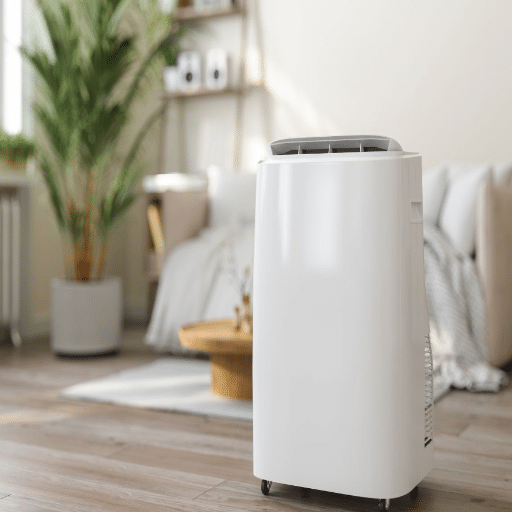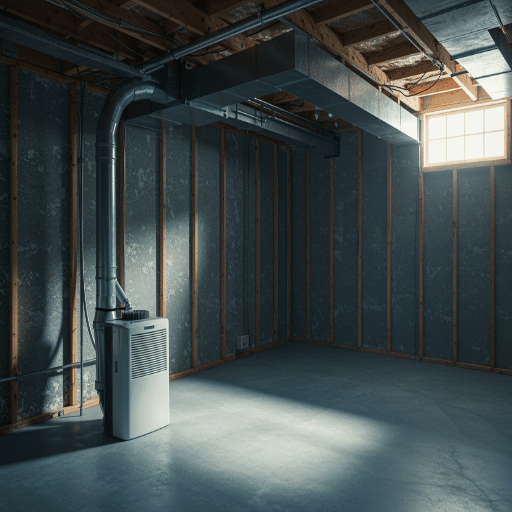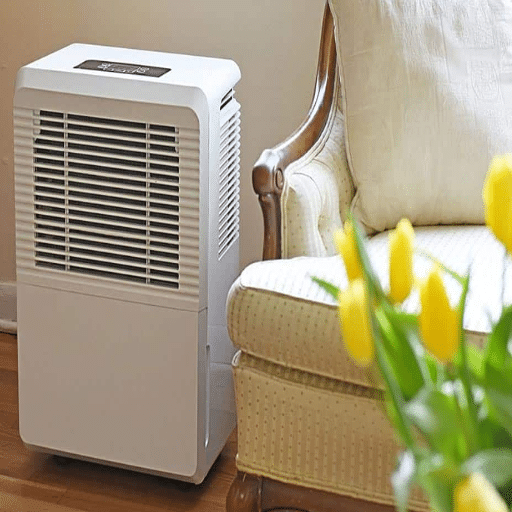Dehumidifiers are essential devices for indoor air quality management by keeping humidity at a desirable level and thus, preventing mold, allergens and moisture-related structural damage from occurring. Still, many users wonder if the continuous, 24/7 operation of dehumidifier is safe and effective. This blog post will unravel the mysteries surrounding dehumidifier usage by discussing advantages, risks, and recommended practices for long-term use. No matter if your goal is to get maximum efficiency from your device or to prolong its life, this all-inclusive guide will equip you with the important perspectives necessary for an educated decision.
Understanding Dehumidifiers

Dehumidifiers are machines aimed at cutting down and holding the ideal humidity level in indoor settings. They operate by sucking in air, getting rid of the superfluous water content through the process of condensation, and then blowing the dried air back into the room. Humidity control is a main function of dehumidifiers, thus they help to eliminate the existence of molds, mildews, and ruin-the-property as well as health through moisture-related problems. Such devices work best in high-humidity places, е.g. basements or bathrooms, thus being the major contributors to the establishment of a comfortable and safe living environment.
What is a Dehumidifier?
A dehumidifier is an electric device which has been specially designed to lower the humidity in the air and to keep it at a certain level; thus, it improves the indoor air quality and the comfort level. The machine takes out the extra moisture from the air using different advanced methods such as desiccant technology or refrigerant and makes the air pass through a fan system and then through the cold coils where water vapor gets condensed into liquid. This water collected in the form of liquid can be either drained through a tube continuously or it can be collected in a removable tank, depending on the type of unit.
Modern Advancements: Recent search trends reflect that the demand for energy-efficient dehumidifiers with smart control and automatic humidity sensors fitted is ever-growing as these features combine to optimize performance and reduce power consumption. These appliances also provide a health benefit by preventing respiratory problems that may be caused by a damp environment.
How Does a Dehumidifier Work?
A dehumidifier draws out extra moisture from the air to do a balancing act and creates a more pleasant environmental humidity level. The process works as follows:
- Air Intake: A fan takes in humid air through intake vents into the appliance
- Cooling Process: The air gets the chilled coils treatment (evaporator coils), cooling to a point below dew point
- Condensation: Water vapor condenses and collects in either a removable reservoir or drains through a hose
- Reheating: The now less moist air gets warmed up again to room temperature with condenser coils
- Air Release: The dried air is blown back into the atmosphere of the room
Modern dehumidifiers are likely to have hygrometers and sensors for measuring the humidity levels in the room, then the operation is automatically adjusted to maintain optimal conditions. Moreover, some of the models have the feature of having filters that are washable to capture particles that are present in the air, thus improving the quality of air indoors alongside the reduction of humidity.
Types of Dehumidifiers
| Type | How It Works | Best For | Considerations |
|---|---|---|---|
| Refrigerant (Compressor-Based) | Moisture-laden air passes through refrigerant coils; water vapor condenses and is collected | Warm and temperate climates, residential and commercial areas | Most popular type; performance diminishes in cold areas |
| Desiccant | Uses absorbent substances like silica gel to bind vapor in the air | Cold regions, industrial sector, cold storage, warehouses | Works well at lower temperatures; uses more electricity than refrigerants |
| Thermoelectric (Peltier Technology) | Uses thermoelectric cooling principle to extract moisture | Small areas: bedrooms, closets, bathrooms | Energy-efficient and noiseless; limited capacity for larger or very humid areas |
Selection Tip: Every dehumidifier type has particular use cases and the consideration of the room size, the average humidity levels, temperature range, and energy efficiency will be the determining factors in the selection of the appropriate one.
Dehumidifier Run Time
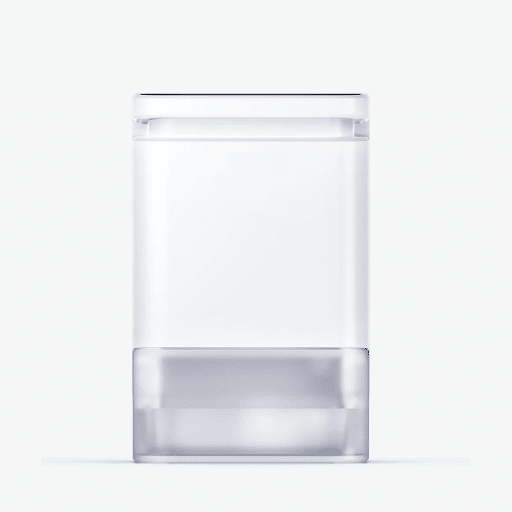
The best runtime for a dehumidifier is determined by a number of factors such as the humidity level at the moment, the room size, and the dehumidifier’s physical characteristics. Most dehumidifiers need to work for about 8 to 12 hours a day on average for good humidity management. But, in the case of very humid areas, like basements or places where water collects, running the machine all the time until the moisture is at a comfortable level of 30%-50% may be necessary.
Hygrometers and automatic shut-off settings are common features in modern dehumidifiers, allowing them to only work when necessary, according to the humidity conditions measured in real-time. This function not only saves electricity but also effectively preserves indoor air quality at the desired level.
Can You Run a Dehumidifier All the Time?
Indeed, the operation of a dehumidifier can be continuous, yet it is vital that the process is supervised and maintained within certain limits so that it could still be done responsibly. The dehumidifiers have been constructed in such a way that they can handle a constant fight with humidity and that too for a long time, in places like cellars where the floor might be damp and the surrounding air is also humid.
⚠️ Important Warning: The constant use of the humidifier without checking can waste power and could lead to premature deterioration of the device.
According to the latest online sources, including Google’s search engine results, the best way to run a dehumidifier is checking the humidity levels inside the room first. A majority of the latest dehumidifier models come with settings meant for automatic operation like inbuilt hygrometers and timers. Such features allow the appliance to stop when the relative humidity has lowered to a pleasant range—typically between 30% and 50%—and to start again when the moisture content rises.
✅ Benefits of 24/7 Operation
- Continuous moisture control in high-humidity areas
- Prevents mold and mildew growth
- Protects structural integrity of buildings
- Essential after flooding or in extreme weather
- Maintains consistent indoor air quality
❌ Potential Drawbacks
- Increased energy consumption and electricity bills
- Premature wear and tear on the device
- Risk of over-dehumidification if unmonitored
- Requires regular maintenance and cleaning
- Water tank overflow if not emptied regularly
Factors Influencing Dehumidifier Runtime
The runtime of a dehumidifier varies depending on several environmental and operational variables. Understanding these factors helps optimize performance and energy efficiency:
- Humidity Level: Higher initial moisture content requires longer operation periods for effective removal
- Room Size: Larger areas take more time to dehumidify effectively
- Dehumidifier Capacity: Unit size and power determine extraction rate
- Temperature: Refrigerant dehumidifiers work best above 60°F (15°C); efficiency decreases at lower temperatures
- Placement & Airflow: Central location with free air circulation facilitates quicker moisture removal
- Insulation Quality: Poor insulation allows humidity to enter continuously, requiring longer operation
- Device Settings: Automated controls optimize operations in real-time based on area conditions
How Long Should You Run a Dehumidifier?
| Humidity Condition | Recommended Runtime | Target Humidity Range |
|---|---|---|
| Very Humid Conditions | 10-12 hours daily (or continuous until stabilized) | 30%-50% |
| Moderate Humidity | 6-8 hours daily | 30%-50% |
| Low Humidity (Maintenance Mode) | Intermittent operation with automatic sensors | 30%-50% |
| Post-Flooding/Emergency | 24/7 until humidity normalizes | Below 50% |
Energy-Efficient Tip: Modern energy-efficient models will switch on and off as per the humidity levels detected, minimizing runtime. Keeping an eye on humidity levels and setting the device according to specific environmental needs ensures energy-efficient and effective dehumidification.
Impact on Humidity Levels
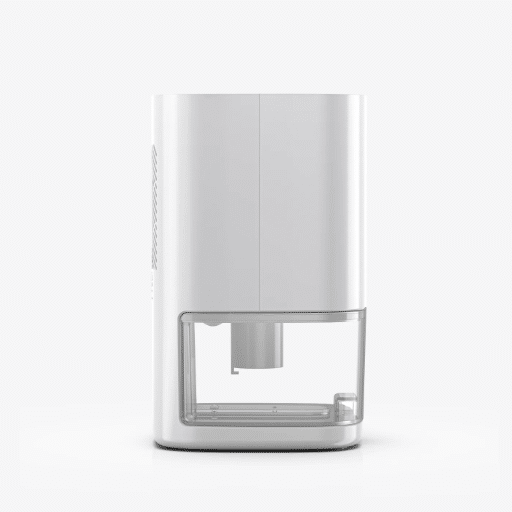
Effects of High Humidity
High humidity levels create a number of problems that can damage buildings and pose serious health risks to humans, especially if humidity goes above the recommended level of 50%:
| Category | Effects | Consequences |
|---|---|---|
| Health Impacts | Growth of mold, mildew, and dust mites | Allergic reactions, respiratory issues, asthma triggers |
| Structural Damage | Wood rotting, metal corrosion, insulation weakening | Costly repairs, compromised building integrity |
| Comfort Issues | Musty odors, sticky feeling, difficulty sleeping | Reduced quality of life, discomfort |
Data from Google’s search engine also support this, as the number of searches for “health risks of high humidity” and “how to prevent mold” continues to grow, which means that more and more homeowners are looking for ways to deal with this issue.
Maintaining Ideal Relative Humidity
EPA Recommendation: The Environmental Protection Agency (EPA) recommends that the ideal indoor relative humidity range is between 30% and 50%.
Understanding the implications of humidity levels outside this range is crucial:
- Below 30%: Causes dry skin, respiratory tract irritation, and damage to wooden furniture
- Above 50%: Ideal conditions for mold, dust mites, and bacteria growth, leading to health risks
Methods to Maintain Ideal Humidity:
- Use Modern Dehumidifiers: Models equipped with hygrometers can automatically adjust their operation based on humidity levels
- Install Proper Ventilation: Good exhaust fans in bathrooms and kitchens help remove excess moisture
- Seal Openings: Weatherproofing prevents outdoor moisture from entering
- Daily Monitoring: Use hi-tech hygrometers to track humidity levels consistently
Condensation and Its Causes
Condensation is a process that takes place when warm air consisting of moisture meets a cool surface, resulting in the cooling of the water vapor and its subsequent conversion into liquid droplets.
Main Causes of Condensation:
- Temperature changes between indoor and outdoor environments
- High humidity levels indoors
- Lack of proper air circulation
- Inadequate insulation
- Poor ventilation systems
- Activities creating moisture (boiling water, drying laundry indoors without proper airflow)
Common Problem Areas: This phenomenon usually appears on surfaces of windows, walls, and pipes, especially in winter when temperature differences indoors and outdoors are greatest. To eliminate condensation completely, it is important to improve insulation, install good ventilation systems as well as monitor humidity levels regularly.
Best Practices for Using a Dehumidifier
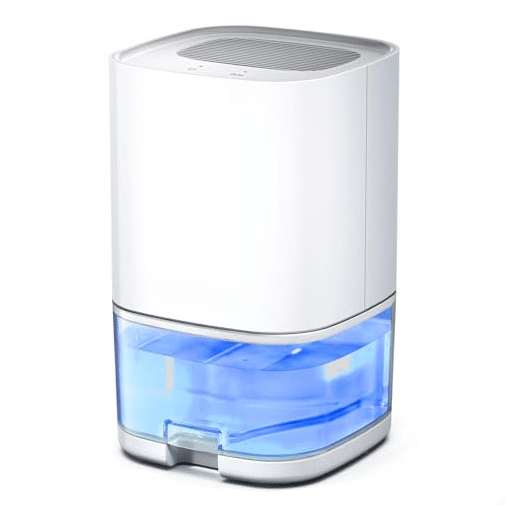
Setting Up Your Dehumidifier
The proper installation of your dehumidifier is highly important for its performance and life span. Follow these critical setup steps:
- Choose the Right Location: Select a spot with good air circulation, free from walls or furniture that may obstruct airflow
- Maintain Temperature Range: Keep the unit in an area where temperature stays within 65°F-90°F to avoid frost damage to coils
- Secure Power Connection: Plug into a reliable power source with proper grounding
- Set Up Drainage: If your model has continuous drainage, attach the hose securely to prevent leaks
- Configure Humidity Settings: Adjust settings to maintain indoor levels between 30%-50% as recommended by health standards
- Clean Air Filter: Check and clean the air filter regularly, as a dirty filter causes poor performance
Optimal Placement
Placement Rule: Centralize the dehumidifier in the middle of the space or position it near the largest source of moisture. Avoid placing it directly next to walls or furniture as these can restrict airflow, reducing effectiveness.
Regular Maintenance Checklist
| Maintenance Task | Frequency | Purpose |
|---|---|---|
| Clean/Replace Air Filter | Every 1-3 months | Maintains air quality and unit efficiency |
| Empty Water Tank | Daily (if not using continuous drainage) | Prevents overflow and automatic shutdowns |
| Inspect Coils | Monthly | Checks for frost or debris buildup |
| Check Drainage System | Weekly | Ensures proper hose connection and flow |
| Monitor Temperature | Daily | Keeps unit within optimal 65°F-90°F range |
| Inspect Electrical Components | Quarterly | Prevents electrical issues and ensures safety |
Monitoring Humidity Levels
Humidity level monitoring is essential for balanced and pleasant indoor atmosphere. A hygrometer, which is a tool that measures the moisture content of the air, is a very accurate way to monitor humidity levels in your house. Google’s latest search data indicates that indoor humidity levels should be kept at 30-50% for the very reasons that this range is the most comfortable and excellent for controlling the growth of allergens like mildew and dust mites.
Pro Tip: Frequent monitoring to check for the right humidity levels plus the right application of dehumidifiers or humidifiers will keep your house as a healthy place for your family and pets.
When to Use a Humidifier and Dehumidifier Together
At first glance, the pairing of a humidifier and a dehumidifier might seem like a waste of effort, but there are also particular cases when it is a practical solution to get indoor air quality that is just right.
Scenarios for Combined Use:
- Variable Weather Climates: In transitional seasons (spring and autumn) when humidity levels change dramatically, both devices maintain the stable 30-50% range
- Multi-Zone Homes: Houses with different humidity levels in various areas (humid basement, dry heated upper floors) benefit from targeted humidity control
- Extreme Climate Regions: Areas with extreme weather variations require flexible humidity management
Implementation Strategy: Place the humidifier in dry zones and the dehumidifier in moist areas. Use hygrometers continuously to monitor and adjust settings on each device, ensuring energy efficiency while maintaining optimal indoor health and comfort.
Specific Areas for Dehumidifier Use
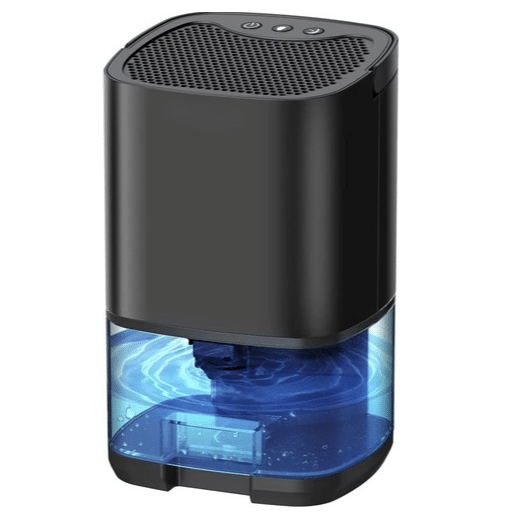
Using a Dehumidifier in a Crawlspace
Installing a dehumidifier in a crawlspace is a very effective approach to controlling excess moisture and preventing mold, mildew, and structural damage from long-term high humidity. Recent statistics from Google indicate that inquiries regarding crawlspace dehumidifiers have immensely increased, especially in places where humidity levels remain high throughout the year.
Do You Need a Crawlspace Dehumidifier?
If your crawlspace shows signs of continual moisture, high humidity (usually above 60%), or unpleasant smells, a dehumidifier is definitely recommended. It will lessen health risks from allergens and bad air while maintaining the house’s structural integrity.
Dehumidifiers for Basements and Attics
Choosing dehumidifiers for basements and attics requires understanding the unique challenges these areas face:
| Area | Common Problems | Dehumidifier Requirements |
|---|---|---|
| Basements | Near ground moisture, poor ventilation, dampness from soil | High-capacity units (35-70 pint), continuous drainage option, energy-efficient operation |
| Attics | Heat buildup, humidity from roof leaks, poor air circulation | Compact design, quiet operation, temperature tolerance, smart controls |
Popular Recommendations: The hOmeLabs unit for 4,500 sq. ft. and the Vremi 35 Pint Dehumidifier are among the widely recommended options for moisture problems in basements and attics, praised by both homeowners and experts.
Managing Condensation on Windows
The problem of condensation on windows is notably widespread, especially in winter months when the air inside is hot and moist, while the air outside is cold. This process is the result of warm moist air coming in contact with the cold surface of the window and consequently, moisture being created.
Effective Methods to Control Window Condensation:
- Lower Indoor Humidity: Use a dehumidifier or improve ventilation in moisture-producing areas (kitchens, bathrooms)
- Improve Insulation: Fill cracks around windows and switch to double-paned or insulated windows to reduce temperature gradient
- Use Moisture Absorbers: Place moisture absorbers or silica gel near windows
- Enhance Air Circulation: Create good circulation with fans to prevent moisture buildup
- Monitor Humidity Levels: Keep indoor humidity between 30%-50% to minimize condensation
Search Insights: According to Google search data, these combined methods effectively keep windows in good condition while enhancing indoor air quality.
Cost and Energy Considerations
Operating Costs
The cost of dehumidifier operation is a function of its size, effectiveness, and electricity consumption based on local rates. Understanding the financial impact helps in making informed decisions:
| Dehumidifier Size | Average Wattage | Daily Cost (8 hrs)* | Monthly Cost* |
|---|---|---|---|
| Small (30 pint) | 300-400W | $0.30-$0.40 | $9-$12 |
| Medium (50 pint) | 500-600W | $0.50-$0.60 | $15-$18 |
| Large (70 pint) | 700-850W | $0.70-$0.85 | $21-$26 |
*Based on average electricity rate of $0.13 per kWh. Actual costs vary by location.
Energy Efficiency Tip: An appropriately-sized dehumidifier will use less energy yet effectively control humidity. Consider energy-efficient models with Energy Star certification during the buying process—they typically use 15-30% less energy than standard models.
Additional Benefits
- Faster Clothes Drying: A dehumidifier working during indoor clothes drying removes moist air, speeds the drying process, and prevents mold growth
- Reduced HVAC Load: Lower humidity makes air feel cooler, potentially reducing air conditioning usage
- Protection of Valuables: Prevents damage to books, electronics, musical instruments, and artwork
- Pest Deterrence: Many pests thrive in humid environments; controlling humidity helps deter infestations
Safety Considerations for 24/7 Operation
⚠️ Critical Safety Measures
- Monitor Water Reservoir: Particular attention needed to prevent overflow causing safety hazards
- Check Electrical Connections: Ensure proper grounding and avoid overloading circuits
- Maintain Clear Space: Keep area around unit clear of flammable materials
- Avoid Extension Cords: Plug directly into wall outlets when possible
- Regular Inspections: Check for unusual sounds, smells, or excessive heat
Signs Your Dehumidifier Needs Attention
| Warning Sign | Possible Cause | Action Required |
|---|---|---|
| Unit runs but doesn’t collect water | Low humidity already achieved, or unit malfunction | Check humidity levels; inspect coils for frost |
| Excessive noise or vibration | Loose components, fan issues | Turn off and inspect; may need professional service |
| Frost on coils | Temperature too low or airflow restricted | Defrost unit, improve room temperature, clean filter |
| Water leaking from unit | Tank overfull, drainage blockage, damaged seal | Empty tank, check drainage system, inspect for damage |
| Musty smell from unit | Mold in tank or filter | Clean tank thoroughly, replace filter, disinfect |
Maximizing Dehumidifier Efficiency
Optimization Strategies
Top 10 Tips for Maximum Efficiency:
- Size Appropriately: Match dehumidifier capacity to room size for optimal performance
- Seal Room Properly: Close doors and windows to prevent humid air from entering
- Clean Regularly: Maintain filters and coils for peak efficiency
- Use Auto-Mode: Enable automatic humidity control to prevent unnecessary operation
- Set Realistic Targets: Aim for 30-50% humidity rather than extremely low levels
- Position Strategically: Central placement with good airflow maximizes coverage
- Combine with Fans: Use ceiling or standing fans to improve air circulation
- Address Moisture Sources: Fix leaks and improve ventilation to reduce humidity load
- Consider Continuous Drainage: Eliminates need for manual tank emptying in 24/7 operation
- Schedule Operation: In moderate climates, run during peak humidity hours rather than continuously
Seasonal Adjustments
| Season | Typical Humidity Challenge | Recommended Action |
|---|---|---|
| Summer | High outdoor humidity, increased indoor moisture | Increase runtime or use continuous mode; monitor more frequently |
| Winter | Condensation from temperature differences | Focus on problem areas (windows, basements); reduce settings if air becomes too dry |
| Spring/Fall | Variable humidity due to weather changes | Use auto-mode; adjust settings based on daily conditions |
References
-
Do You Use a Humidifier or Diffuser Before Bedtime? – A resource from Virginia Tech discussing the continuous use of humidifiers and related devices.
-
Mold Prevention and Remediation – A guide from Bucknell University recommending the continuous use of dehumidifiers for mold prevention.
-
Dehumidifier, What Size? – A discussion on dehumidifier usage, including considerations for running it 24/7, hosted on a specialized forum.
Frequently Asked Questions (FAQ)
Is it possible to have a dehumidifier on continuously?
Definitely! It’s fine to use a dehumidifier 24/7 and sometimes it’s necessary for regions with excessive moisture. Nonetheless, a humidity meter will assist you to keep the right humidity level in your house without removing the moisture excessively from the air.
The duration of running a dehumidifier?
The humidity in the house dictates the time a dehumidifier should be running. During hot and humid summers, you may find yourself running the machine for several hours at a time. It’s better to continually check the humidity in your house so you can make an educated guess on the running time.
Is it okay for a dehumidifier to stay on all the time?
In general, with proper maintenance and monitoring, it is safe to leave a dehumidifier working non-stop. However, the water reservoir needs particular attention as it might overflow causing safety hazards.
What would the outcome be if a dehumidifier works non-stop?
A constant dehumidifier usage will ensure the air inside your place is at the right humidity level thus no mold formation or window condensation. At the same time, it will lead to higher electricity bills, which stresses the need to regulate the use of the appliance according to the humidity levels.
Are dehumidifiers good for eliminating condensation on windows?
Dehumidifiers can remove window condensation spheres up to HP by reducing air humidity. A dehumidifier is particularly effective in places that have high humidity levels or in the rainy season when cold surfaces are prone to accumulation of water.
Setting the target humidity for a dehumidifier?
Most of the modern dehumidifiers have a built-in humidistat that allows you to pick your preferred humidity level. You should aim for around 30-50% humidity to keep the environment comfortable for the occupants, and at the same time, prevent moisture-related problems in your household.
Can dehumidifiers be used in crawl spaces?
Using a dehumidifier in a crawl space is awesome! It helps a lot if the area is usually wet or humid. Thus, such a practice is essential to prevent molds, rotting of wood, and other costly moisture-related problems.
What is the cost of operating a dehumidifier?
The cost of a dehumidifier operation is the function of its size, effectiveness, and electricity consumption based on local rates. It should be noted that an apt-sized dehumidifier will use less energy yet effectively control the humidity, hence consider energy-efficient models during the buying process.
Can a dehumidifier help when drying clothes indoors?
Definitely! A dehumidifier working during clothes drying indoor will not only remove the moist air thus speed the drying process but also keep the area free of a humid atmosphere that is conducive for mold growth and bad air in the house.

